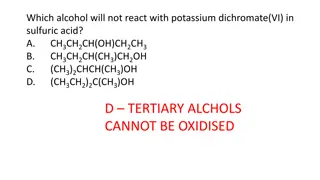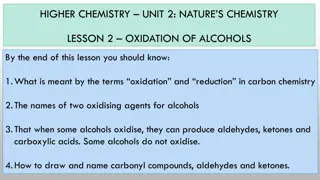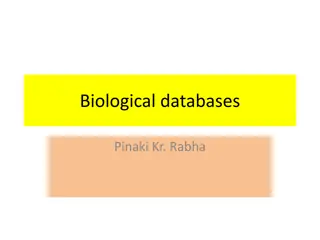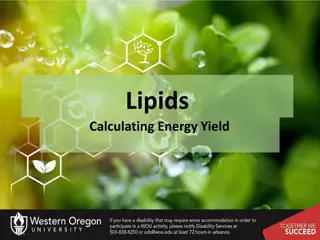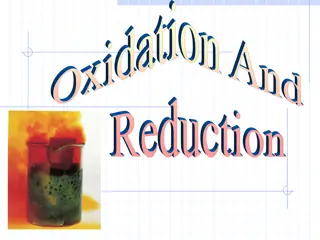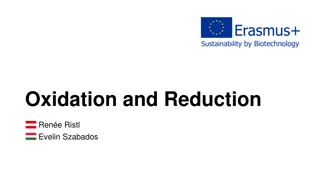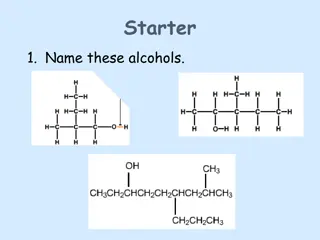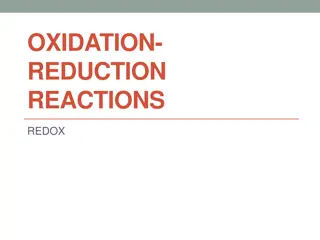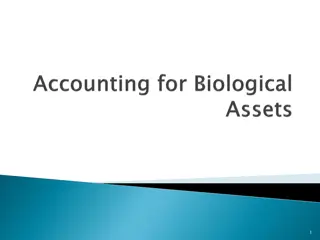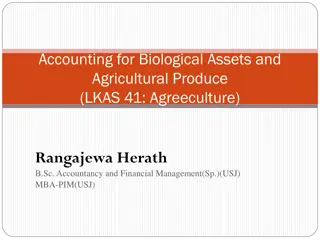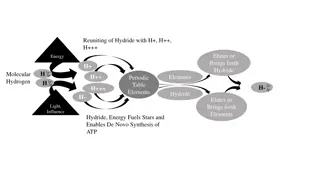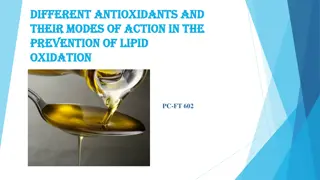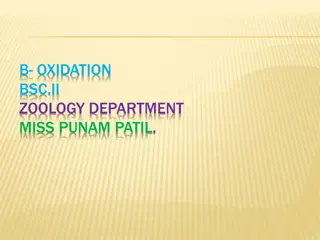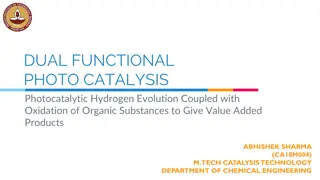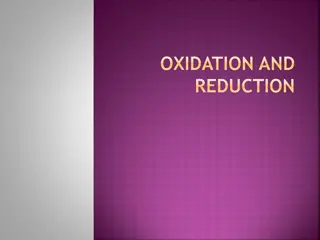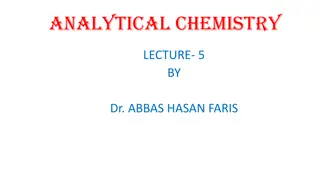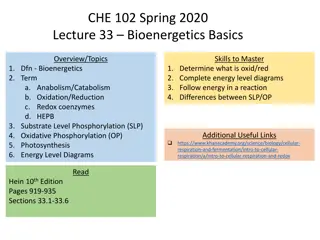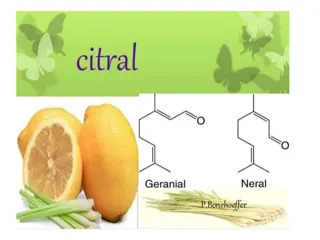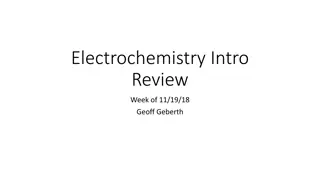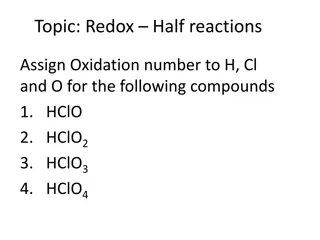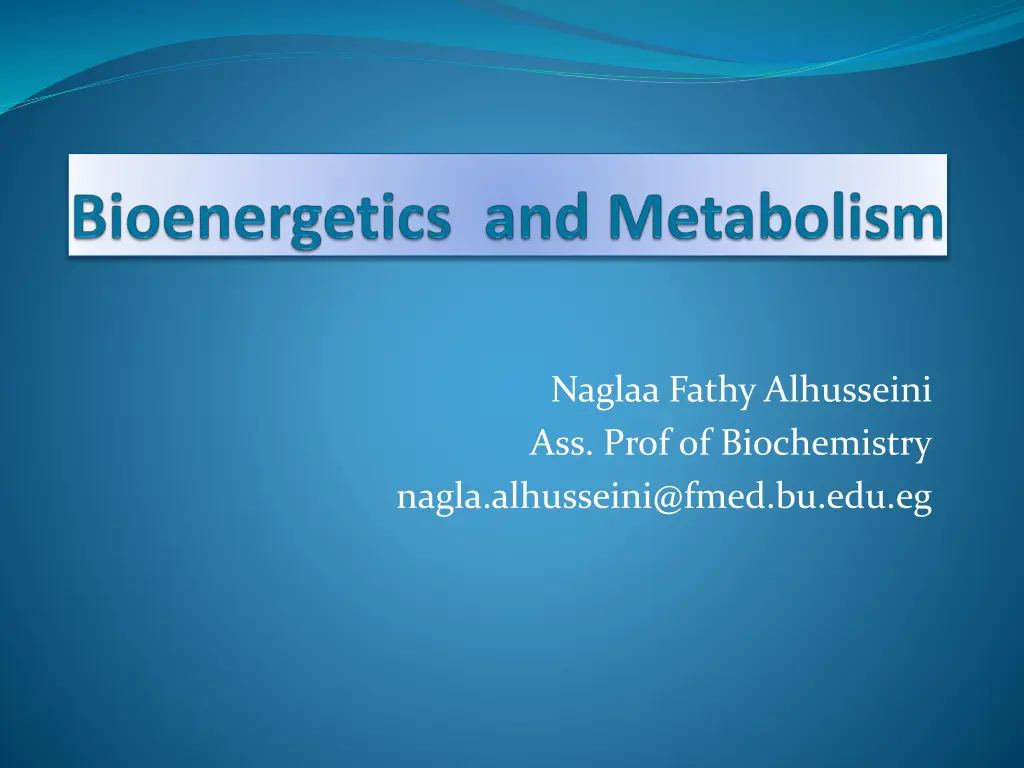
Biochemical Reactions and Energy Metabolism Overview
Discover the intricacies of metabolism, including anabolism and catabolism, energy generation through ATP formation, and the process of oxidative phosphorylation. Dive into the world of biochemistry with Prof. Naglaa Alhusseini and explore the fundamental principles governing cellular reactions and energy utilization.
Uploaded on | 0 Views
Download Presentation

Please find below an Image/Link to download the presentation.
The content on the website is provided AS IS for your information and personal use only. It may not be sold, licensed, or shared on other websites without obtaining consent from the author. If you encounter any issues during the download, it is possible that the publisher has removed the file from their server.
You are allowed to download the files provided on this website for personal or commercial use, subject to the condition that they are used lawfully. All files are the property of their respective owners.
The content on the website is provided AS IS for your information and personal use only. It may not be sold, licensed, or shared on other websites without obtaining consent from the author.
E N D
Presentation Transcript
Naglaa Fathy Alhusseini Ass. Prof of Biochemistry nagla.alhusseini@fmed.bu.edu.eg
Metabolism All intracellular biochemical reactions used the simplest units of nutrients (glucose- Fatty acids- glycerol and amino acids) for either building up (anabolism) or breakdown (catabolism) 7/3/2025 Nagla Alhusseini 2
Anabolism Building up (Synthesis) of complex molecules Endergonic = consumes energy e.g. Biosynthesis of glycogen, triacylglycerols and proteins 7/3/2025 Nagla Alhusseini 3
Catabolism Breakdown (Degradation) of complex molecules Exergonic = releases energy e.g. Oxidation of glucose, Oxidation of fatty acids, etc. 7/3/2025 Nagla Alhusseini 4
Energy It is the capacity to do work or the ability to make a change The energy in our body have two types 1- heat energy body temp. 2- Free energy trapped or collected as high bond ATP 7/3/2025 Nagla Alhusseini 5
Formation of ATP 1- Substrate Level Phosphorylation S~P + ADP S + ATP Kinase 7/3/2025 Nagla Alhusseini 6
Oxidative Phosphorylation (Respiratory chain level ) SH2 +NAD S + NADH+ + H+ Respiratory chain ATP H2O 7/3/2025 Nagla Alhusseini 7
Respiratory chain Oxidation process accompanied with liberation of energy G, that stored as high energy phosphate bond ~ P (ATP) for further uses The process includes: 1- Oxidation: gradual transfer of hydrogen and electron (Low Redox potential ) to oxygen (high Redox potential) . Redox potential : the ability to accept an electron The electron transfers from components with low Redox potential to components with high Redox potential. 7/3/2025 Nagla Alhusseini 8
reducing properties Redox potential E Gibbs energy G oxidizing properties 7/3/2025 Nagla Alhusseini 9
Phosphorylation : The energy liberated from oxidation stored in the form of high energy phosphate bonds ~ P (ATP) ADP + pi + G ATP ATP synthetase 7/3/2025 Nagla Alhusseini 10
Respiratory chain It is a group of oxidation reduction reaction through them the hydrogen is gradually transfer to oxygen to form water and liberate energy G which stored as high ~ (ATP) Oxidative phosphorylation process Site: Inner mitochonderial membrane enzymes 7/3/2025 Nagla Alhusseini 11
- glucose - fatty acids - amino acids - ketone bodies etc.. Succinate DH Acyl-CoA DH 2 H+ FADH2 o- Fe+++ Fe++ Fe++ Fe+++ FMNH2 2 2 H2O CoQ 2 2 SH2 reduced substrate NAD cyt(b) cyt(c) cyt(c1) cyt(a) cyt(a3) O Fe+++ 2 Fe+++ Fe++ 2 2 + FMN 2 Fe++ NADH H+ CoQH2 S oxidized substrate A- Sequence of events in respiratory chain ADP+Pi ADP+Pi ADP+Pi 3 2 1 cyt(c) cyt(c1) cyt(b) cyt(a) cyt(a3) Substrate NAD FMN CoQ O2 1 2 ATP ATP ATP B- Probable sites of phosphorylation in respiratory chain Respiratory Chain = Electron Transport Chain = Cytochrome System Nagla Alhusseini 7/3/2025 12
Sequence of events 1- Oxidation reduction processes between NAD, FAD and coQ occur by transfer of hydrogen 2- Oxidation reduction processes inn cytochromes occur by transfer of electron 3- When respiratory chain starts by NADH+H+, 3 incorporated to 3 ADP form 3ATP when O2 (O) incorporated with H2 to form H2O 4- When respiratory chain starts by FADH2 , 2 incorporated to 2 ADP form 2ATP when O2 (O) incorporated with H2 to form H2O 7/3/2025 Nagla Alhusseini 13
P/O ratio: It is the ratio between inorganic phosphates consumed to form ATP in relation to oxygen atom reduced forming water in the respiratory chain. 1-In case of oxidation of NADH+H+ it is 3/1 (3 ATPs formed at 3 coupling sites), 2-in case of oxidation of FADH2 it is 2/1 (2 ATPs formed at 2 coupling sites). 7/3/2025 Nagla Alhusseini 14
: Uncouplers of Oxidative Phosphorylation Uncouplers are substances that inhibit the oxidative phosphorylation by ETC. They dissociate oxidation from phosphorylation. Uncouplers allow electron transport to proceed without ATP synthesis. Uncouplers allow leakage or transport of H+ across the membrane, thus collapsing the proton gradient for ATP synthesis The oxidation of hydrogen with oxygen to form H2O proceeds while no phosphorylation of ADP to ATP. The free energy liberated during oxidation is lost as heat, so uncouplers cause the body temperature to rise (cause hotness). 7/3/2025 Nagla Alhusseini 15
Examples of uncouplers of Oxidative phosphorylation 2,4-Dinitrophenol (DNP) and Pentachlorophenol: Warfarin: is a rat poison Barbiturates Dicumarol Bilirubin: in abnormal high levels as in jaundice Calcium: in large dose Thyroid hormones (T3 & T4): in abnormal high levels as in hyperthyroidism Toxins: of some bacteria and fungus 7/3/2025 Nagla Alhusseini 16
7/3/2025 Nagla Alhusseini 17
reducing properties Redox potential E Gibbs energy G oxidizing properties 7/3/2025 7/3/2025 Nagla Alhusseini Nagla Alhusseini 18 18

